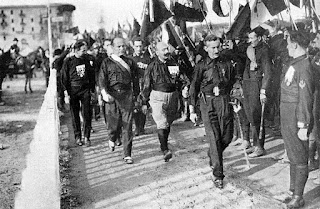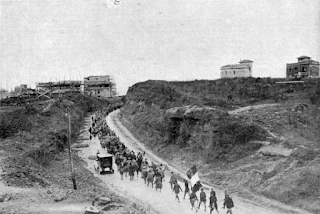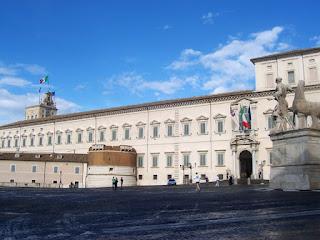Franco Corelli - 'Prince of Tenors'
Self-taught singer who wowed New York
The great Italian tenor Franco Corelli died in Milan on this day in 2003 aged 82 after suffering heart problems. Corelli was renowned for the power and vibrancy of his voice, described by some as generating a 'white heat' on the stage when he performed. In a career spanning more than a quarter of a century he mastered all the major tenor roles and appeared at the greatest opera theatres in the world. He was a fixture at the Metropolitan Opera in New York, where he performed 19 roles over 15 seasons in some 365 appearances. As well as possessing outstanding vocal range, he used his natural assets – he stood 6ft 1ins tall and weighed 200lbs – to develop a charismatic stage presence. Blessed with movie star looks, he had the appearance of an opera-singing Errol Flynn. He was nicknamed the 'Prince of Tenors'. Corelli was born in 1921 in Ancona on Italy’s Adriatic coast, in a house just yards from the shore. His father was a shipbuilder for the Italian navy and as he neared adulthood it seemed that Corelli’s destiny was to pursue the same profession. He obtained a place at Bologna University to study naval engineering. It was while he was in Bologna that a friend dared him to enter a singing competition. Read more…
________________________________________
Carlo Emanuele Ruspoli – Duke of Morignano
Noble architect is now a prolific writer
Carlo Emanuele Maria Ruspoli was born on this day in 1949 in Rome. He became the third Duke of Morignano in 2003, succeeding his father, Prince Galeazzo Ruspoli. Carlo had previously graduated as a Doctor of Architecture from the Sapienza University of Rome and he now works as a researcher and writer. He is a prolific author of works on history and anthropology as well as historical novels, drawing on his own family heritage and his fascination with the East. The House of Ruspoli is one of the great aristocratic families of Rome and all members hold the title of Prince of the Holy Roman Empire. The family’s origins can be traced back to their ancestor, Marius Scotus, in the eighth century, the Ruspoli family of Florence in the 13th century, and the Marescotti family of Bologna. A branch of the Ruspoli family moved to Rome in the 17th century. Their last descendant, Vittoria Ruspoli, Marchioness of Cerveteri, married Sforza Marescotti, Count of Vignanello, a descendant of the Farnese family, but to make sure the House of Ruspoli continued, one of Vittoria’s sons, Francesco Maria Marescotti Ruspoli, took on the name and coat of arms of the House of Ruspoli. Read more…
______________________________________
King appoints Mussolini Prime Minister
Victor Emmanuel turned to Fascist leader after fearing civil war
Victor Emmanuel III, the king of Italy, invited Benito Mussolini to become Prime Minister on this day in 1922, ushering in the era of Fascist rule in Italy. History has largely perceived the decision as a moment of weakness on the part of the king, a man of small physical stature who had never been particularly comfortable in his role. Yet at the time, with violent clashes between socialist supporters and Mussolini’s Blackshirts occurring almost daily with both sides bent on revolution, Victor Emmanuel feared that Italy was on the brink of civil war. The First World War had been financially crippling for Italy, even though they had emerged with a victory of sorts in that the Austro-Hungarians were finally pushed out of northern Italy. In the poverty that followed, the country shifted sharply to the left and in the 1919 general election the Italian Socialist Party (PSI) gained 32 per cent of the vote, amounting to 156 seats in the Chamber of Deputies, the largest representation in their history. But for all the support for the PSI, particularly among factory workers in urban areas, there were just as many Italians who felt uncomfortable about their advance, and not only those who belonged to the moneyed elite. Read more…
________________________________________
Fabiola Gianotti - particle physicist
First woman to be director-general of CERN
The particle physicist Fabiola Gianotti, who in 2016 became the first woman to be made director-general in the 64-year history of the European Organisation for Nuclear Research, was born on this day in 1960 in Rome. She led one of the two teams of physicists working for the organisation - generally known as CERN after its title in French - whose experiments in 2012 resulted in the discovery of the Higgs boson, the particle that explains why some other elementary particles have mass. The discovery was regarded as so significant in the advancement of scientific knowledge that it was nicknamed the “God particle.” As the project leader and spokesperson of the ATLAS project at CERN, which involved a collaboration of around 3,000 physicists from 38 countries, Dr. Gianotti announced the discovery of the particle. Their work involved the Large Hadron Collider (LHC), the world's largest and most powerful particle collider and the largest machine of any kind on the planet, which lies in a tunnel 27km (17 miles) in circumference, 175 metres (574 ft) beneath the France–Switzerland border near Geneva. Read more…
.jpg)
.jpg)

.jpg)


.jpg)






_(5904657870).jpg)
.jpg)
.jpg)
.jpg)
